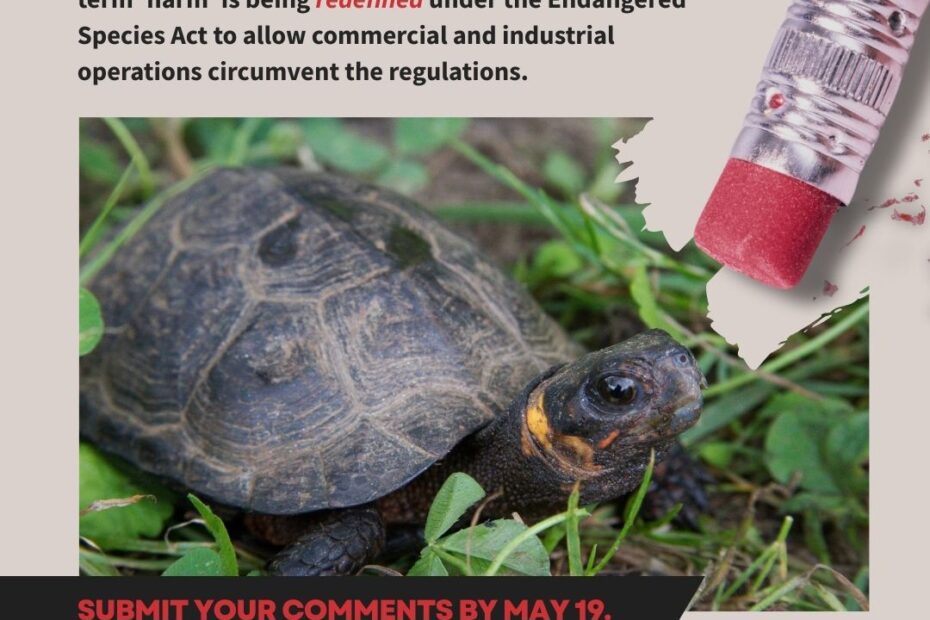The U.S. Fish and Wildlife Service (FWS) and the National Marine Fisheries Service (NMFS) have proposed to rescind the definition of “harm” as it applies under the Endangered Species Act. The current definition of harm includes significant habitat modification or degradation which results in the injury of wildlife by impairing their essential behaviors like breeding and sheltering and could also kill the wildlife by affecting their habitat. This is the standard both agencies apply when looking at how industries or projects proposed may affect endangered species they come into contact with. By rescinding this definition, if a project impacts a habitat but did not intend to kill, trap, capture, or collect the species, they would not be found to be in violation of the Endangered Species Act.
You can submit your comments to the record by May 19th to be considered in preventing this terrible decision. Make sure your comment includes the Docket Number FWS–HQ–ES–2025–0034 .
Some suggested talking points:
- Countless government agencies, industries, developers, nonprofits, and the like rely on this language for their practices, how they review projects or develop them, and how activists defend these critical species. The changing of this definition that has been in existence since the 1970s would require all of these parties to change their practices, procedures, and way of doing business. In Dep’t of Homeland Sec. v. Regents of the Univ. of California, the Supreme Court discussed that “when an agency changes course . . . it must be ‘cognizant that longstanding policies may have ‘engendered serious reliance interests that must be taken into account’ “.
- The Atlantic Sturgeon of the Delaware River are a genetically unique population that is found nowhere else in the world. One of the biggest threats to this population is losing their critical spawning grounds in the Philadelphia to Wilmington portions of the Delaware River that are at risk for deepening, dredging, and rock blasting for development in and along the river as well as ship traffic, all of which negatively impacts the Atlantic Sturgeon and puts at risk their feeding, shelter, breeding grounds, and in the process has killed them. If this definition were rescinded, we would lose a critical method of protecting this genetically unique population of the Atlantic Sturgeon.
- There is no sound reason to stop using the current definition of harm in the Endangered Species Act. All this will do is give harmful industry another, and easier, pathway to pushing more endangered species closer to the brink of extinction.
- Projects are not ever built with the intention of hurting an endangered species. But if a project will degrade a species habitat, causing harm to that animal, then projects need to be held to that standard of ensuring the species is protected.

